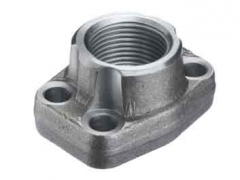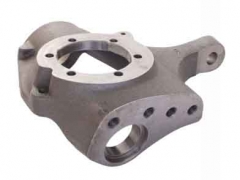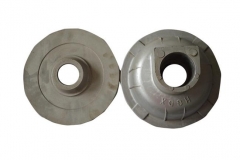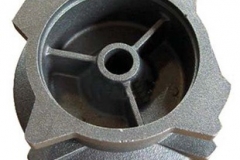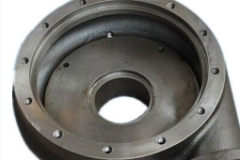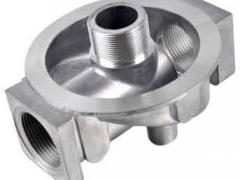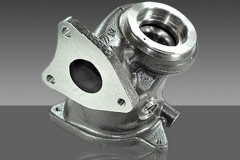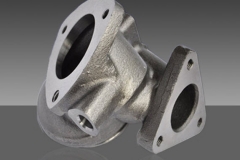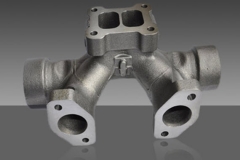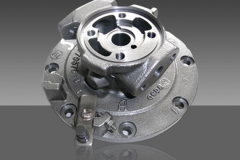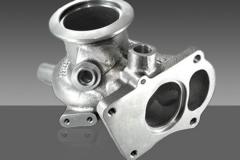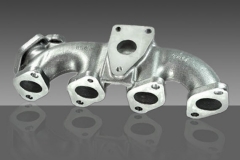Sand Casting
ForceBeyond provides superior quality sand casting parts and components to industries including automotive, transportation, mining, petrochemical, electrical, energy and others. We cast sand casting parts up to 10 metric tons. Materials can be aluminum alloy, ductile iron, brass alloy, gray iron etc. We offer high precision CNC machining and other secondary operations. We also offer rapid prototype services. Both low to high-production volume sand casting are welcome.
What Is Sand Casting?
Sand casting, also known as sand molded casting, is a process that uses non-reusable sand molds to form metal castings. This is a common production method for a wide range of metal parts from a few ounces to a few tons. Sand casting is not only versatile in terms of its product size, but it can also make very complicated or detailed castings and can cast almost any metal alloy.
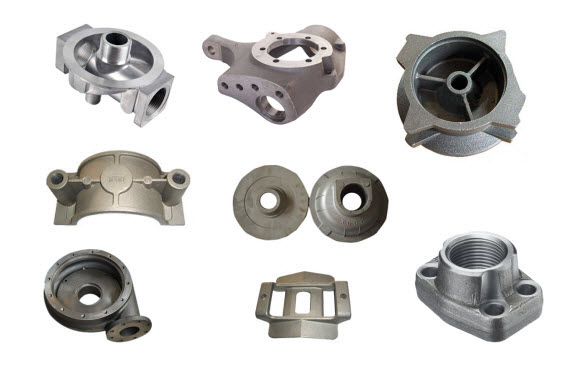
How are Sand Castings Made?
Mold-Making: Creating a mold is the first step in the sand casting process. Each casting needs a mold. A sand mold is formed by putting the sand into each half of the mold. The sand is stacked around the pattern, which is a replica of the shape of the casting. When the pattern is removed, the cavity forming the casting remains. Any internal features of castings that cannot be formed by the pattern are formed by separate cores made of sand before forming the mold. Mold making time includes positioning patterns, packaging sand and remove the pattern. Mold manufacturing time by the size of components, the number of cores and the impact of sand. Lubricant is typically applied to the surface of the mold cavity to facilitate removal of the casting. The use of lubricants also improves the flow of the metal and can improve the surface finish of the castings. The lubricant used is selected based on the temperature of the sand and the molten metal.
Pouring: After the mold is made, it must be prepared to pour the molten metal. First, the surface of the cavity is lubricated in order to remove the castings after casting. Then, the core is positioned and the mold halves are closed and securely clamped together. It is necessary to keep the mold half sealed to prevent any loss of material. The molten metal is kept at the set temperature in the furnace. After the mold is clamped, the molten metal can be cast from the holding vessel in the furnace and poured into the mold. Pouring can be done manually or by automated machines. Sufficient molten metal must be poured to fill the entire cavity and all channels in the mold. Filling time is very short, to prevent the early curing of any part of the metal.
Cooling: Once poured into the mold, molten metal begins to cool and solidify. When the entire cavity is filled and the molten metal solidifies, the final shape of the casting is formed. Until the end of cooling time, the mold can be opened. The cooling time required can be estimated from the wall thickness of the casting and the temperature of the metal. Most of the possible defects are the result of the solidification process. If some molten metal cools too quickly, the part may shrink, crack or incompletely. Precautions can be taken when designing parts and molds.
Removal: After a predetermined set time, the sand mold can simply be broken and the castings removed. This step, sometimes referred to as getting rid of sand, is usually shaken by a vibrating machine and burned out of the bottle. Once removed, the castings may have some sand and oxide adhering to the surface. Blasting is sometimes used to remove residual sand, especially from the inside surface, and to reduce the surface roughness.
Trimming: During cooling, the material from the mold channels solidifies on the part. These extra material must be manually trimmed by cutting or sawing or using a trimming machine. The time it takes to trim excess material can be estimated from the size of the casting. Larger castings require longer dressing times. Waste from this trimming is discarded or reused during sand casting. However, it may be necessary to remediate appropriate chemicals for scrap before it is used in conjunction with non-recycled metals.
Advantages of Sand Casting
- Almost any ferrous and non-ferrous metals can be casted by sand casting
- Parts caan vary greatly in size, weight and shape. Weight can be from ounces to hundreds of tons
- Cost of tools is low comparing to other process
- Small quantity or large quantity
- Relative low cost for high volume parts
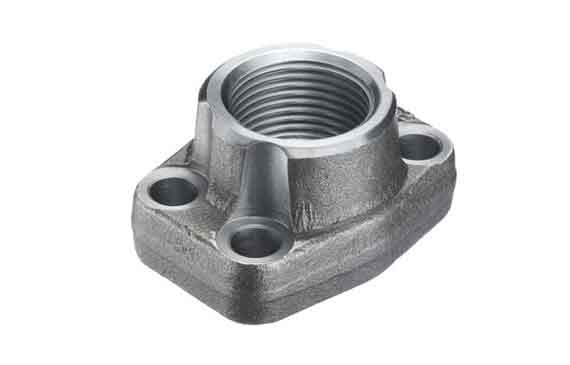
Materials and Secondary Operations of Sand Casting We Offer
- Materials can be aluminum alloy, ductile iron, brass alloy, gray iron etc.
- Grinding, drilling, tapping, painting, shot blasting
- High precision machining
- Heat treatment
- Assembly, packaging
Sand Casting Parts
Sources
- American Foundry Society. “Metal Casting”
- Wikipedia. “Investment Casting“, “Sand Casting“
- efunda. “Sand Casting“
- The Investment Casting Institute. “What is Investment Casting?“
- The Library of Manufacturing. “Investment Casting“
- Forging Industry Association “Forging Industry“
Our Internal Resources for Die Casting, Investment casting, Forging and Sand Casting
- Die Casting
- Aluminum Die Casting
- Zinc Die Casting
- A356 Aluminum Casting with T6 Heat Treatment
- Magnesium Die Casting
- Investment Casting
- Stainless Steel Casting
- Duplex Stainless Steel Casting
- Super Duplex Stainless Steel Casting
- Titanium Casting
- Carbon & Low Alloy Casting
- Forging
- Cold Forging
- Hot Forging
- ECO BRASS C69300 Brass Forging
- Sand Casting (Aluminum Sand Casting, Ductile Iron Sand Casting, Gray Iron Sand Casting)
- Specialty Fittings and Fasteners
- Precision CNC Machining and Secondary Operations

